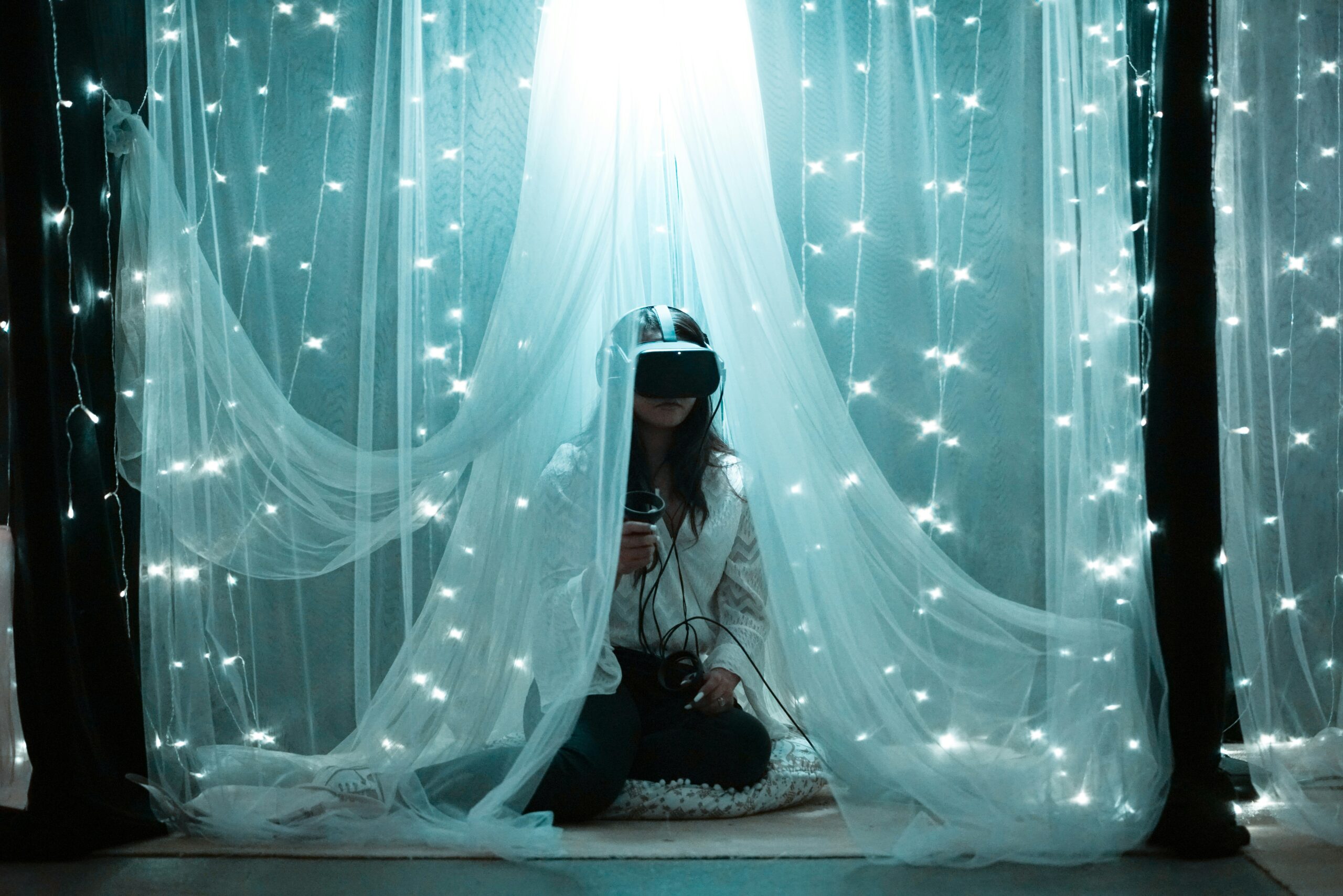Welcome to “The Basics of Augmented Reality,” where you’ll dive into the fascinating world where digital information meets your real-life environment. In this article, you’ll explore practical uses of augmented reality (AR) that span various fields, from education to entertainment and beyond, showing just how seamlessly AR is integrating into your everyday life. Enjoy discovering how AR is enhancing your experiences and paving the way for a more interactive and immersive future. Have you ever wondered how your reality could be more engaging, informative, and interactive? Well, Augmented Reality (AR) is the technology that does just that, blending the virtual world with the real world in ways that can enhance your everyday experiences. Whether you are someone who’s curious about tech, a student, or a professional looking to leverage this technology, this article titled “The Basics of Augmented Reality” will guide you through its fascinating realms.
Let’s dive into what Augmented Reality is, how it works, and its practical applications in today’s world.
$30 off $400+ Anycubic Products with code AC30OFF
What Is Augmented Reality?
Defining Augmented Reality
Augmented Reality (AR) refers to the technology that overlays digital information—such as images, sounds, videos, and other data—onto the real-world environment. Unlike Virtual Reality (VR), which creates an entirely new digital environment, AR enhances your existing reality. Think of it as a digital layer added to what you see around you.
How Does It Work?
At its core, AR combines inputs from various sensors, like cameras and GPS, with graphical processing to seamlessly blend digital elements with the real world. The technology often requires the following components:
- Hardware: Devices like smartphones, AR glasses, and AR headsets.
- Software: AR applications or platforms that process and display the digital data.
- Sensors: Cameras, GPS, accelerometers, and gyroscopes for more accurate orientation and positioning.
History of Augmented Reality
Even though AR might seem like a recent innovation, its roots go back several decades. The idea of augmenting reality appeared in movies and books in the early 20th century. The first AR device, known as the Sword of Damocles, was developed in 1968 by computer scientist Ivan Sutherland. Today, AR has evolved dramatically, thanks to advancements in computing power, sensor technology, and graphics.
Practical Uses of Augmented Reality
In Education
Imagine studying history and seeing 3D holograms of ancient civilizations superimposed on your classroom! AR offers immense potential in education, making learning more interactive and engaging. Here’s how:
- Interactive Learning: Lessons can be turned into immersive experiences. For example, biology students can explore human anatomy in 3D.
- Remote Education: AR allows for virtual classrooms where students can interact in real-time with 3D models.
In Healthcare
AR is proving to be a game-changer in healthcare. The technology provides surgeons with real-time, 3D models of organs, helping them perform complex procedures more efficiently.
- Surgery: Surgeons can overlay medical imaging onto a patient’s body for more precise incisions.
- Medical Training: AR simulations offer medical students hands-on practice without the risks associated with real-life procedures.
In E-commerce
Ever hesitated to buy a piece of furniture online because you weren’t sure how it would look in your home? AR can help.
- Virtual Try-ons: Customers can virtually “try on” clothes, accessories, or even makeup.
- Preview Placement: Furniture and home decor items can be virtually placed in a room to see how they fit and look.
In Real Estate
AR can help you visualize how an apartment or house will look even before it’s built.
- Property Tours: Prospective buyers can take virtual tours of properties, complete with furniture and decor.
- Interior Design: AR can show how various design choices will look in a space, helping in making informed decisions.
In Gaming
Gaming is perhaps one of the most popular fields where AR is used. Remember Pokémon Go? That was AR at work.
- Interactive Gameplay: AR games blend real-world environments with game elements, making the gaming experience more immersive.
The table below summarizes some of these uses:
| Sector | Practical Use |
|---|---|
| Education | Interactive learning, remote education |
| Healthcare | Surgery assistance, medical training |
| E-commerce | Virtual try-ons, preview placement |
| Real Estate | Property tours, interior design visualization |
| Gaming | Interactive gameplay |

Buy Photon Mono M5 Get Free 1KG Resin
AR Technology: All You Need to Know
Hardware Components
When it comes to AR, the hardware you use significantly impacts your experience. Here are the most common devices:
- Smartphones and Tablets: The most accessible AR devices, using the camera and screen for AR applications.
- AR Glasses/Headsets: These hands-free devices, like Microsoft HoloLens or Google Glass, offer a more immersive experience.
- Smart Mirrors and Heads-Up Displays: Used in retail and automotive sectors respectively, these devices incorporate AR for a more interactive user experience.
Software Platforms
Several software platforms are available for developing AR applications. Some of the most popular ones are:
- ARKit by Apple: Provides tools for AR development on iOS devices.
- ARCore by Google: Designed for creating AR applications on Android devices.
- Unity and Unreal Engine: These are game development engines that also offer robust AR development capabilities.
AR Markers and Markerless AR
AR applications can be categorized based on how they trigger the AR content:
- Marker-Based AR: Uses predefined images or objects as the trigger. When the camera detects these markers, the AR content is displayed.
- Markerless AR: Uses the environment and positional sensors, like GPS and accelerometers, to place digital content. Pokémon Go uses this type of AR.
SLAM Technology
Simultaneous Localization and Mapping (SLAM) is crucial for accurate AR. It allows devices to understand and map their surroundings while tracking their own position. This makes it possible to place digital objects more accurately in the real-world environment.
Future of Augmented Reality
Trends to Watch
The AR landscape is ever-evolving, and being aware of upcoming trends can give you a better grasp of what to expect. Some promising trends include:
- 5G Integration: Faster internet speeds will improve AR experiences by reducing latency.
- Enhanced Wearables: Next-gen AR glasses and headsets will be lighter and more functional.
- AI and Machine Learning: These technologies will make AR applications smarter, offering more personalized experiences.
- Enterprise AR: More businesses will adopt AR for training, remote assistance, and operational efficiency.
Challenges and Limitations
While AR promises a lot, it’s not without its challenges:
- Hardware Limitations: Current hardware can be bulky and expensive.
- Battery Life: AR applications can drain your device quickly.
- Privacy Concerns: Collecting data from the environment raises privacy issues.
- Standardization: Lack of industry standards can make cross-platform development tricky.

How to Get Started with Augmented Reality
For Users
If you’re interested in using AR, there are many mobile apps and devices readily available:
- Apps: Apps like IKEA Place, Snapchat, and Pokémon Go offer you a taste of AR.
- Devices: Try using AR through your smartphone or invest in AR glasses like the Microsoft HoloLens.
For Developers
For developers looking to dive into AR, here are some steps you can take:
- Choose Your Platform: Decide whether you want to develop for iOS, Android, or both.
- Learn the Basics: Familiarize yourself with AR development frameworks like ARKit, ARCore, or Unity.
- Start Small: Begin with simple projects to understand the fundamental concepts.
- Join Communities: Engage with AR development communities for support, ideas, and collaboration.
Conclusion
Augmented Reality is transforming the way we interact with the world, making experiences more immersive, informative, and intuitive. From education and healthcare to e-commerce and gaming, AR offers numerous practical applications that are both fascinating and beneficial. As hardware improves, software evolves, and more businesses and individuals embrace this technology, AR is set to become an integral part of our daily lives.
So whether you’re a tech enthusiast, a professional looking to leverage AR for business, or just someone curious about this fantastic technology, now is a great time to delve into the world of Augmented Reality. Who knows? The next big AR innovation could come from you!
Feel free to explore, experiment, and enjoy the endless possibilities that Augmented Reality has to offer. Thanks for joining us on this journey into the basics of Augmented Reality.
$30 off $400+ Anycubic Products with code AC30OFF




